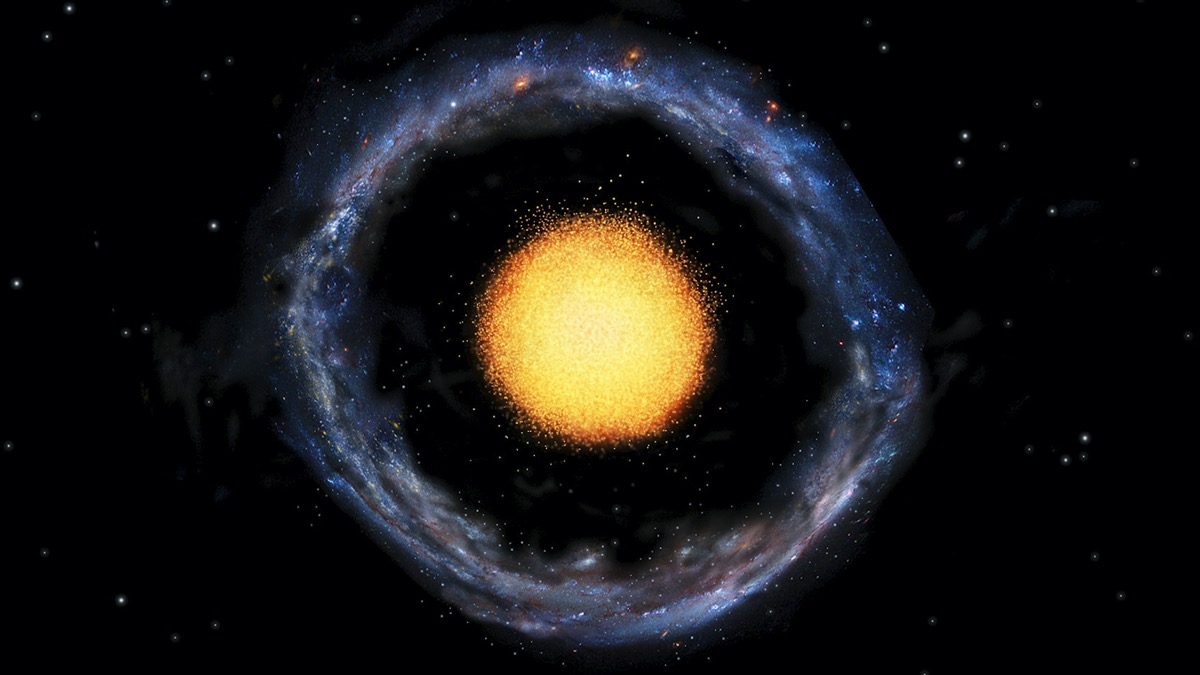This video is a part of Breakthrough, a short film anthology from Science Friday and Howard Hughes Medical Institute (HHMI) that follows women working at the forefront of their fields. Learn more and watch the films on BreakthroughFilms.org.
Scientists have strong and tested theories about how most galaxies in the universe formed. But sometimes, one is found and defies all known assumptions.
This was the case for astrophysicist Burçin Mutlu-Pakdil, who discovered an extremely odd-shaped galaxy in the background of a broad survey of the sky. The galaxy in question had a central body surrounded by an elliptical outer ring of stars, unconnected to the core. This is an extremely rare phenomenon—1 in 1,000 galaxies take on this configuration, conservatively. But Mutlu-Pakdil looked closer and lo and behold—the galaxy had not one, but two rings—a completely new kind of galaxy!

Based on the existing research, Mutlu-Pakdil thought this type of object couldn’t exist. But as a person who has defied expectations, it was fitting that she would discover a celestial object with a little regard for convention.
Since she was a young girl, Mutlu-Pakdil had looked up at the stars and dreamt of studying the universe. But that dream had its limits in her culture. She grew up as a devout Muslim in Turkey, at a time when headscarves were banned at colleges and other public institutions. But she persisted and went on to become a postdoctoral researcher at the University of Arizona’s Steward Observatory.
Today, Mutlu-Pakdil studies unusual galaxies of a different kind—dwarf galaxies. Using an array of telescopes in Chile, she hopes to find more of these fast-spinning objects and learn what they can reveal about how galaxies are formed.
Further Reading
- Check out Mutlu-Pakdil’s research website.
- Watch Mutlu-Pakdil on TED Talk.
Donate To Science Friday
Invest in quality science journalism by making a donation to Science Friday.
Credits
Directed and Produced by Chelsea Fiske
Director of Photography by Brandon Swanson
Edited by Chelsea Fiske
Animations by Lottie Kingslake
Music by Audio Network
Series Producer – Luke Groskin
Additional Photos And Videos by NASA, ESA, STScI, Hubble, the Hubble Heritage Team, AURA, NOAO, NSF, JPL-Caltech, ESO, Digitized Sky Survey 2, Sloan Digital Sky Survey, WikiSky, DECam, DSS2, NAOJ, A. Aloisi, Nick Risinger, Giuseppe Donatiello, M. Kornmesser, F. Summers, J. DePasquale, G. Bacon, Z. Levay, H. Ferguson, A. Koekemoer, the CANDELS Team, C. Malin (christophmalin.com), KIPAC/Stanford/AMNH, Kevin Keating, Adam Block, du Pont telescope at Las Campanas Observatory, Penn Museum, Valerie Coit (University of Minnesota Duluth), Pond5, “Burçin Mutlu-Pakdil: A rare galaxy that’s challenging our understanding of the universe” byTED2018, Babak Tafreshi, Michael Carroll, Burçin Mutlu-Pakdil
Project Advisors for HHMI Tangled Bank Studios Richard Stone Aileen O’Hearn
Project Support for Science Friday Initiative Danielle Dana, Jennifer Fenwick, Ariel Zych Nadja Oertelt, Kyle Marian Viterbo, Diana Montano Daniel Peterschmidt, Xochitl Garcia, Nahima Ahmed
Special Thanks Burçin Mutlu-Pakdil, The Mutlu Family, The Fiske Family, Tom Fleming, Steward Observatory, NOAO
Meet the Producers and Host
About Chelsea Fiske
Chelsea Fiske is a video producer with Moonjelly Productions in Seattle, Washington.
About Luke Groskin
@lgroskinLuke Groskin is Science Friday’s video producer. He’s on a mission to make you love spiders and other odd creatures.